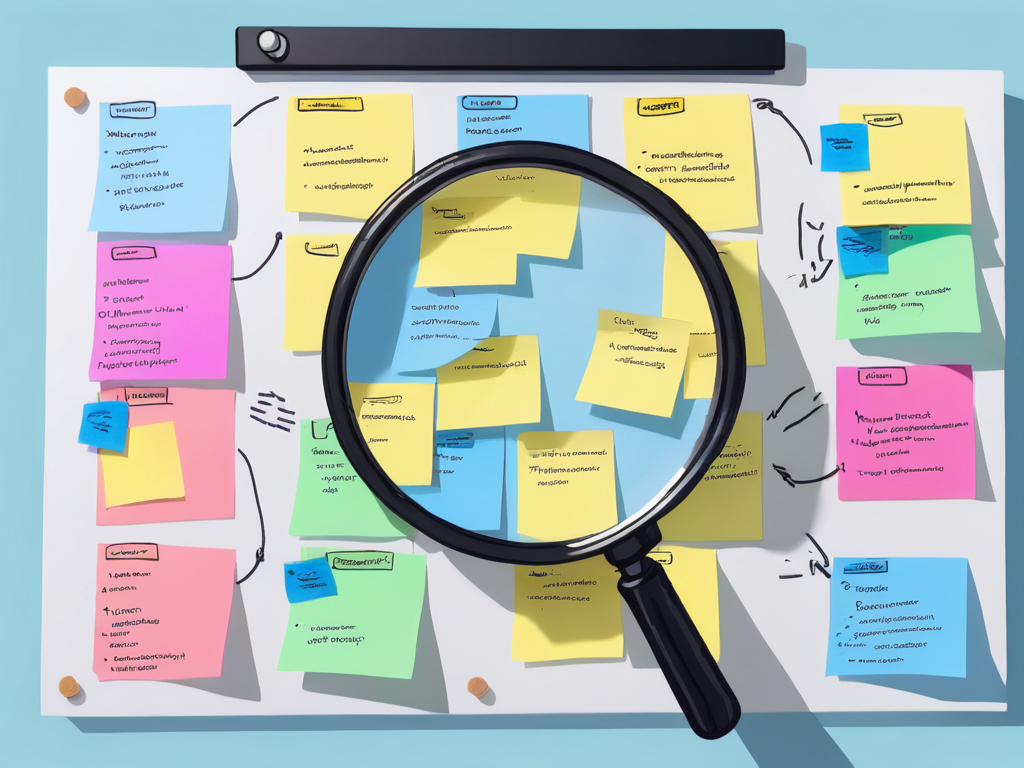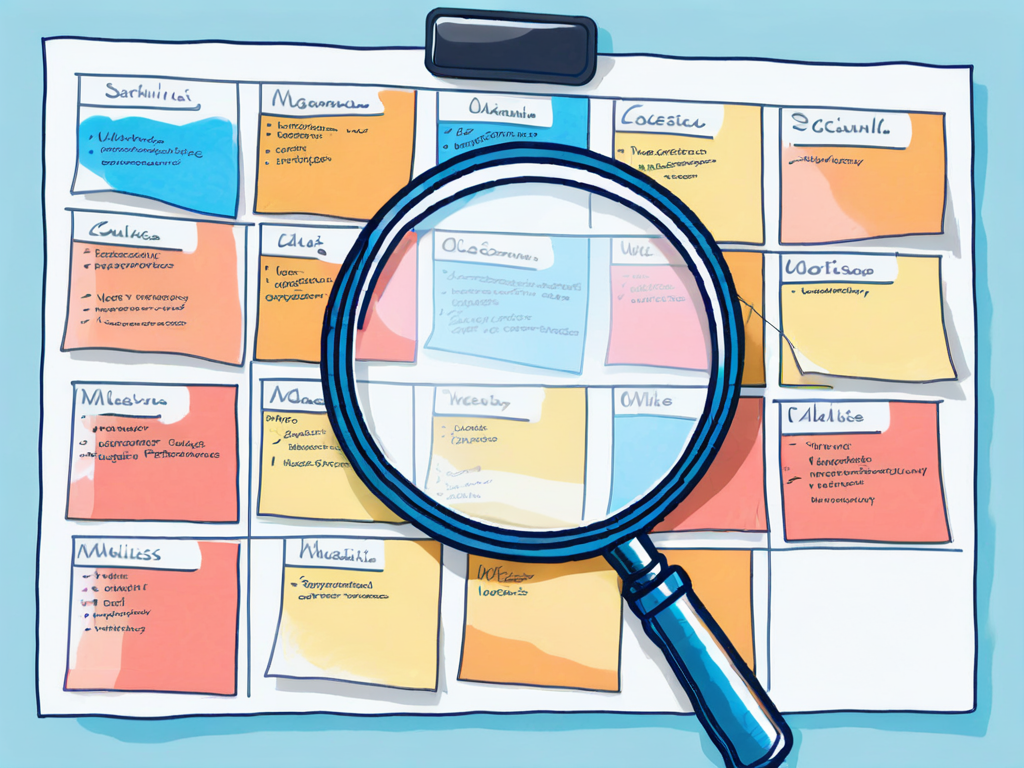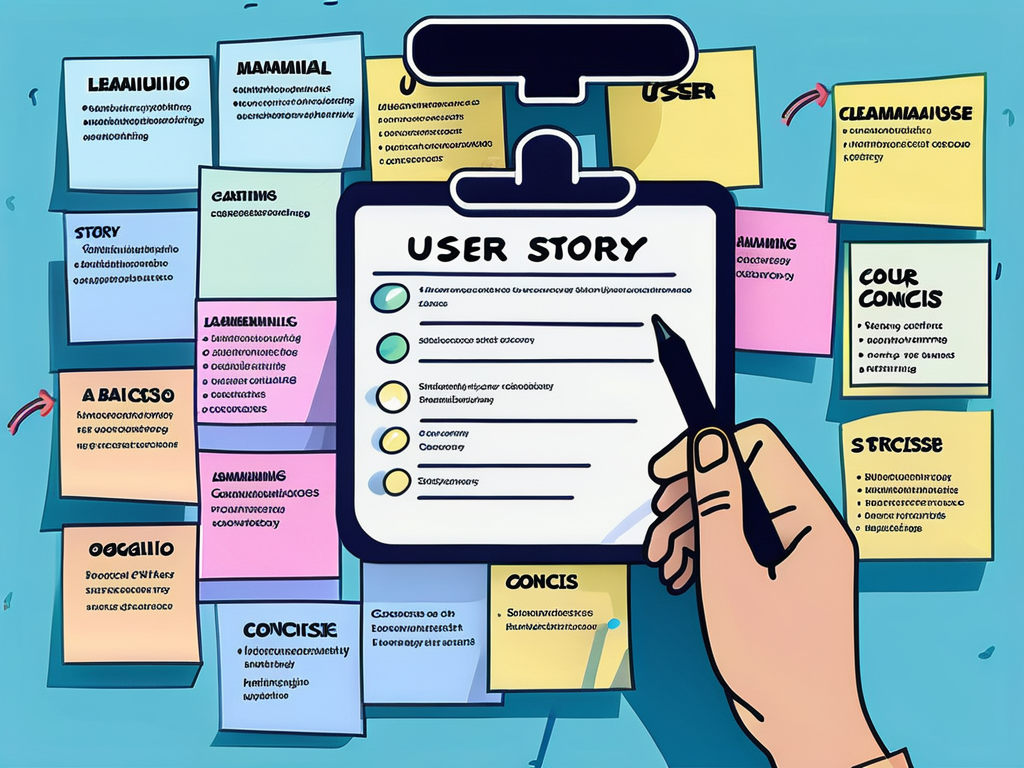· Alex · documentation · 10 min read
The Importance of User Stories in Scrum
The Crucial Role of User Stories in Scrum. Unveiling the complexity of Astrowind's internal workings through detailed documentation.

Scrum, a popular agile framework for software development, has gained widespread adoption in the industry due to its effectiveness in organizing and managing complex projects. Central to the success of Scrum is the use of user stories, which serve as a crucial tool for communication, prioritization, and collaboration within the Scrum team. In this article, we will explore why user stories are essential in Scrum and how they contribute to the overall success of a project.
Understanding Scrum and User Stories
Defining Scrum: An Agile Framework
Scrum is an iterative and incremental framework that helps teams deliver high-quality software products by fostering collaboration, adaptability, and continuous improvement. It provides a flexible and empirical approach to project management, where the team self-organizes to deliver increments of work within short time frames, called sprints. Scrum emphasizes transparency, inspection, and adaptation, allowing teams to respond quickly to changing requirements and deliver value to customers.
Within the Scrum framework, there are three key roles: the Product Owner, Scrum Master, and Development Team. The Product Owner is responsible for maximizing the value of the product and managing the product backlog. The Scrum Master serves as a facilitator for the Scrum team, ensuring adherence to Scrum practices and removing any impediments to progress. The Development Team is responsible for delivering potentially shippable increments of the product at the end of each sprint.
What are User Stories?
User stories are concise descriptions of functionality or features from the perspective of an end user. They capture the user’s requirement or need in a simple, understandable format. A user story consists of three key components: the role of the user, the desired action, and the expected outcome. For example, a user story for an online shopping platform could be: “As a customer, I want to be able to add items to my cart and proceed to checkout, so that I can easily purchase the products I need.”
Writing effective user stories is crucial for ensuring that the development team understands the user’s needs and can deliver value accordingly. User stories are often written on index cards or sticky notes and are prioritized in the product backlog based on their importance and value to the end user. By breaking down features into user stories, teams can focus on delivering small, manageable increments of work that provide tangible benefits to the customer.
The Role of User Stories in Scrum
User Stories as Communication Tools
 Effective communication is essential for successful software development projects. User stories act as a bridge between stakeholders, product owners, and development teams, enabling clear and concise communication of project requirements. By writing user stories in a language that everyone understands, teams can ensure that the desired functionality and goals are well-defined.
Effective communication is essential for successful software development projects. User stories act as a bridge between stakeholders, product owners, and development teams, enabling clear and concise communication of project requirements. By writing user stories in a language that everyone understands, teams can ensure that the desired functionality and goals are well-defined.
User Stories for Prioritizing Work
Prioritization is a critical aspect of Scrum, as it enables teams to focus on high-value features and deliver them in a timely manner. User stories help product owners and scrum teams prioritize work by providing a clear understanding of the customer’s needs and expectations. By assigning priority to user stories based on their value and urgency, teams can align their efforts with the most critical requirements and deliver incremental value with each sprint.
User Stories for Estimation and Planning
Another crucial role of user stories in Scrum is aiding in estimation and planning. When breaking down features into user stories, teams can better estimate the effort required for each story and plan their sprints accordingly. By having well-defined user stories, teams can more accurately predict the time and resources needed to complete each task, leading to more realistic sprint planning and delivery timelines.
User Stories for Iterative Development
User stories also play a key role in facilitating iterative development in Scrum. By dividing features into small, manageable user stories, teams can continuously deliver value to customers with each sprint. This iterative approach allows for frequent feedback from stakeholders, enabling teams to make adjustments and improvements throughout the development process. User stories serve as a roadmap for iterative development, guiding teams on what features to prioritize and deliver in each sprint.
Crafting Effective User Stories
Elements of a Good User Story
 A well-crafted user story follows the INVEST principle, which stands for Independent, Negotiable, Valuable, Estimable, Small, and Testable. Independent user stories can be developed and delivered in any order, allowing for flexibility and adaptability. Negotiable user stories are open to discussion and refinement, ensuring that the entire team is aligned on the requirements. Valuable user stories provide measurable value to the end user or customer. Estimable user stories can be sized or estimated to facilitate planning and forecasting. Small user stories are easily understandable, implementable, and manageable within a single sprint. Testable user stories have clear acceptance criteria that can be used to verify when the story is complete.
A well-crafted user story follows the INVEST principle, which stands for Independent, Negotiable, Valuable, Estimable, Small, and Testable. Independent user stories can be developed and delivered in any order, allowing for flexibility and adaptability. Negotiable user stories are open to discussion and refinement, ensuring that the entire team is aligned on the requirements. Valuable user stories provide measurable value to the end user or customer. Estimable user stories can be sized or estimated to facilitate planning and forecasting. Small user stories are easily understandable, implementable, and manageable within a single sprint. Testable user stories have clear acceptance criteria that can be used to verify when the story is complete.
Expanding on the concept of Independent user stories, this principle emphasizes the importance of each user story being self-contained and not dependent on another for its completion. This independence allows development teams to work on different user stories simultaneously, promoting parallel progress and efficient use of resources. By breaking down features into independent user stories, teams can also prioritize and deliver value incrementally, providing stakeholders with early visibility into the product’s development.
Common Mistakes to Avoid
When crafting user stories, it’s important to avoid common pitfalls and mistakes that can hinder their effectiveness. One common mistake is creating overly complex or ambiguous user stories, which can lead to misunderstandings and delays in development. Another mistake is writing user stories that are too large or encompass too much functionality, making them difficult to implement within a single sprint. Additionally, neglecting to involve the entire team in the creation and refinement of user stories can result in incomplete or inaccurate requirements.
Furthermore, overlooking the aspect of prioritization in user story creation can lead to inefficiencies in project delivery. Prioritizing user stories based on value, risk, and dependencies can help teams focus on delivering the most critical features first, ensuring that the product meets essential requirements early on. Effective prioritization also enables teams to adapt to changing circumstances and stakeholder needs, maximizing the product’s value and impact.
Benefits of User Stories in Scrum
Enhancing Team Collaboration
User stories promote collaboration and cross-functional teamwork within the Scrum framework. By involving the entire team in the creation and refinement of user stories, everyone gains a shared understanding of the project goals, requirements, and priorities. This collaborative approach fosters a sense of ownership and accountability, leading to improved communication, efficiency, and product quality.
Ensuring Customer Satisfaction
User stories keep the end user or customer at the center of the development process. By focusing on the user’s needs and expectations, teams can ensure that the developed features and functionality align with customer requirements. This customer-centric approach enhances customer satisfaction and loyalty, as the delivered software meets their specific needs and provides a positive user experience.
Expanding further on the benefits of user stories in Scrum, it’s important to highlight how they contribute to adaptability and flexibility in project development. User stories allow for incremental and iterative development, enabling teams to respond quickly to changing requirements and market conditions. This adaptive approach ensures that the product remains aligned with evolving customer needs and business goals, leading to a more successful and sustainable outcome.Moreover, user stories serve as a valuable tool for prioritization and resource allocation. By breaking down features and functionalities into smaller, manageable units, teams can easily prioritize tasks based on customer value, complexity, and dependencies. This prioritization helps teams focus on delivering high-value features first, maximizing the return on investment and ensuring that the most critical aspects of the project are addressed in a timely manner. This strategic allocation of resources enhances project efficiency and overall team productivity, ultimately leading to a more successful project outcome.## Implementing User Stories in Your Scrum Framework
Steps to Integrate User Stories
 Integrating user stories into your Scrum framework requires a structured and iterative approach. Start by identifying the key stakeholders and gathering their requirements. This initial step is crucial as it sets the foundation for the entire project. By involving the stakeholders from the beginning, you ensure that their needs and expectations are taken into account throughout the development process.
Integrating user stories into your Scrum framework requires a structured and iterative approach. Start by identifying the key stakeholders and gathering their requirements. This initial step is crucial as it sets the foundation for the entire project. By involving the stakeholders from the beginning, you ensure that their needs and expectations are taken into account throughout the development process.
Once the requirements are gathered, it’s time to collaborate with the development team to decompose them into user stories. This step involves breaking down the requirements into smaller, manageable pieces that can be easily implemented. Story mapping or backlog grooming techniques can be used to prioritize, refine, and estimate the user stories. This collaborative effort ensures that the development team has a clear understanding of what needs to be done and how it aligns with the overall project goals.
Overcoming Potential Challenges
While user stories can greatly benefit Scrum teams, challenges may arise during their implementation. One common challenge is resistance to change. Some stakeholders may be hesitant to embrace the user story approach, especially if they are accustomed to traditional requirements documentation. To overcome this challenge, it is important to educate and communicate the benefits of user stories, emphasizing how they promote flexibility, adaptability, and customer-centricity.
Another challenge is defining acceptance criteria. User stories need to have clear and measurable criteria that determine when they are considered complete. This can be challenging, especially when dealing with complex or abstract requirements. To address this challenge, it is important to involve the stakeholders and the development team in the process of defining acceptance criteria. By collaborating and seeking input from all parties involved, you can ensure that the criteria are well-defined and aligned with the desired outcomes.
Additionally, balancing the level of detail in user stories can be a challenge. User stories should be concise and focused, but at the same time provide enough information for the development team to understand and implement them effectively. Striking this balance requires ongoing communication and collaboration between the stakeholders and the development team. Regular refinement sessions and feedback loops can help fine-tune the level of detail in user stories, ensuring that they are neither too vague nor overly prescriptive.
In conclusion, user stories play a vital role in Scrum, enabling effective communication, prioritization, and collaboration within development teams. By embracing user stories as communication tools, prioritizing work based on their value, and crafting them effectively, Scrum teams can deliver high-quality software that meets the needs and expectations of their customers. Implementation of user stories requires a structured approach, coupled with a focus on team collaboration and continuous improvement. With user stories at the core of the Scrum framework, teams can navigate complex projects with clarity, efficiency, and customer satisfaction.
Streamline Your Scrum Process with DailyBot
Ready to enhance your Scrum team’s collaboration and efficiency? DailyBot is the async productivity tool designed for remote teams to drive transparency and alignment with your Scrum framework. With features like Check-ins, you can bypass daily standup meetings while keeping track of everyone’s progress in chat platforms like Slack, Google Chat, Discord, and Microsoft Teams. Monitor progress, prioritize tasks, and celebrate achievements with Kudos—all within your chat environment. Plus, with DailyBot’s ChatGPT integration, you can turn your chat into a powerful AI-assistant for automating processes. Take the first step towards a more productive and aligned team by trying DailyBot for free today.





